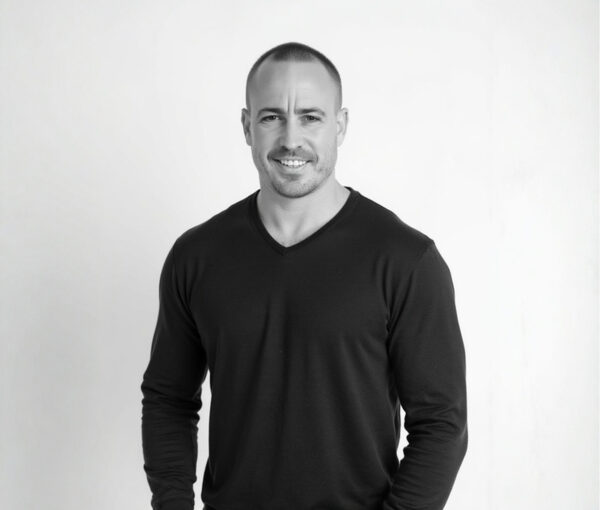Build the right internal business processes and the right chemistry, and first-class relationship between chair and chief executive will automatically follow. This line best underscores the self-confessed “no spice, no friendship” working relationship between Waste Management’s chairman Jim Syme and the company’s long-standing CEO Kim Ellis.
Syme was nominated last year’s Top 200 QBE Insurance chairman of the year so his bona fides as top-performing chairman are acknowledged.
The duo’s “no-games” formal, yet comfortable approach to boardroom business suits them. Ellis thinks their decidedly no-frills relationship is about as good an example of how the CEO/chair relationship should be handled as you’ll find.
It is based more on professionalism and mutual respect for each other’s skills than any personal rapport. Syme and Ellis come from very different professional backgrounds. Syme, older by decade, is hardcore governance and chairmanship. Ellis, on the other hand, is management through and through, his skills honed in cross-section of companies.
And while both men accept absolutely the importance and effectiveness of good working relationship, they believe the consequences of becoming too chummy are damaging to any organisation. While there are still traces of it around, the days of the CEO and chairman cutting the strategy behind the scenes are, says Syme, all but over. Remaining open and constructive is part of fostering productive governance culture.
Preferential treatment
Syme is adamant the chair shouldn’t be engaged in conversations that provide preferential information. Ellis, therefore, rarely briefs him before board meeting. “I want to know what keeps Kim awake at night, but I don’t want to hear more than the board hears,” says Syme. “The chair should set the tone of the board, but it’s hard to lead and facilitate excellent relationships around the board table if some directors feel they are out of the loop.”
To keep the board totally engaged, the monthly phone and email communications between Ellis and Syme concentrate more on processes, priorities and timetables.
Key company information remains the domain of boardroom discussion. “That’s not to say it isn’t important for chairs and CEOs to keep up their communications. They should be in regular contact about emerging issues and how the board’s agenda is shaping up for the next meeting,” says Syme.
It is, he adds, hard enough, for Waste Management directors to fully get their heads around the multi-disciplined organisation that encompasses disposable collections, environmental resource, and waste recovery business, without trying to hide things from them. With his background in finance and merchant banking, he unashamedly admits that it took him the best part of year to fully understand the business when he joined the board as director.
“What makes the CEO and chairman relationship and chemistry work is an absolute understanding of what the company is all about. Once the layers of governance and the responsibilities of the CEO and board are in place the CEO/chairman relationship is automatically transparent,” says Syme.
Presented with predominantly new board line-up over the past five years, Ellis recognises that it will take directors similar periods of time to fully understand the business. Once this frustrated him. Now he realises how important it is for new directors to feel comfortable asking as many questions as possible, no matter how naïve they seem.
He and Syme believe baptism of fire or being thrown in at the deep end, is better for both the board and the individual than simply relying on mandatory accreditation to bootstrap rookie directors. “New directors need help in coming up to speed, but it’s just something we live with,” says Ellis.
Once directors come to terms with the organisation and its responsibilities, Syme believes they should step back and not ask too many operational-type questions. He has no objection to directors talking to the CEO on particular matter, but he frowns on those who circuit the board to do it.
Correct separation
Good governance, says Syme, includes an understanding of the correct separation of executive and board responsibilities. Similarly, it’s important not to cross the line between the responsibilities of the chairman who leads the board and the CEO who leads the executive team. Syme doesn’t want to get so close to the CEO that he compromises the information the board should be privy to. Rather than share confidences he suggests Ellis engage the entire board by emailing them the same information. “A good chair is mindful of the differences between directors and ensures the entire board moves ahead together on key issues.”
It is, agrees Syme, the board’s job to appoint the CEO to discharge the agreed strategy of the organisation and to ensure the company operates effectively. But once those demarcations are in place the board must “let management get on with running the business and provide additional support” by, for instance, finding the additional funding, human capital or extra resources that the CEO needs to successfully run the organisation.
When Ellis took over as Waste Management’s managing director in 1993, the company was bottom-drawer investment for controlling shareholder, US-based Waste Management International (WMI). WMI’s decision to sell down all its offshore subsidiaries and the arrival of Syme on the board in 1998, provided an interesting catalyst for the local company’s future direction beyond its home patch. Ellis now credits Syme with having guiding hand in moving into Australia, building new board and full listing on the Australian stock exchange (ASX).
Since becoming an independent New Zealand-controlled organisation three years ago, Waste Management has become leader in materials recovery. “Jim arrived as WMI was exiting the business and at time when Enron and other international scandals prompted major corporate governance rethink,” recalls Ellis.
But it was the company’s decision to make an Initial Public Offering (IPO) that finally opened up the strategic plan to embrace its next major frontier, Australia. With 18 years’ experience as professional director under his belt, Syme has introducing the company to best practice governance processes and principles.
Evolving governance
Waste Management’s board has evolved under the Syme/Ellis partnership. The myriad of statutory laws and regulations that accompany listing on the NZX ensures directors put good deal more effort into meeting their governance compliance obligations.
But simultaneously the board’s strategic workload has increased. With about 50 acquisitions over the past 10 years Ellis says the company’s strategic focus is the key to its success. “There’s deal on the table at every board meeting so the focus is strategy and the dynamic issues surrounding it. We have well-articulated strategic plan which is reviewed jointly by management and the board each year. There’s no board position as such. There is agreement, and we’re very cohesive,” he adds.
The trick, says Syme, is to manage the corporate governance process in the right context and without losing sight of the main agenda. The board works hard at being more than just ‘tick-the-box’ committee, rubber stamping corporate governance compliance. Ellis believes agreed work plans have turned the board’s attention to strategy while ensuring it doesn’t get too bogged down with operational detail. “Whenever there’s significant strategic move I’ll bring nominated executives into the boardroom so that directors can see the management team in action,” he says.
According to Syme, senior management has programme to work on while the board discharges its governance responsibilities. “Every board needs to understand its proper role. We are ‘watch-dog’ board, not pilot board,” he adds. “We have solid, mature organisation that’s doing extremely well. It’s the responsibility of the bo











